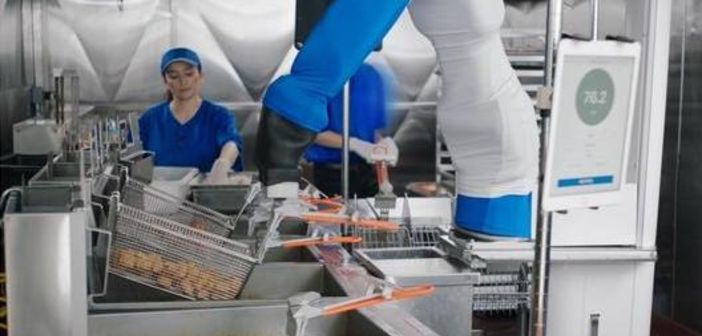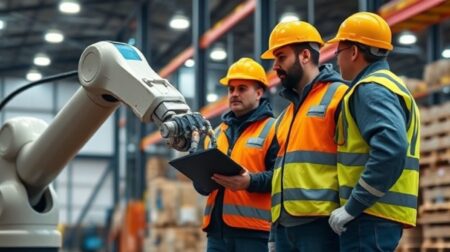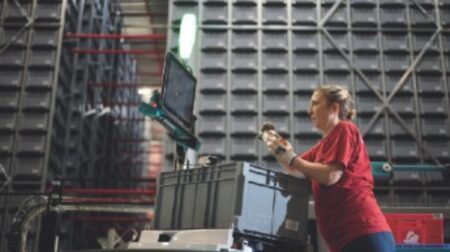Robots that can cook – from flipping burgers to baking bread – are in growing demand as virus-wary kitchens try to put some distance between workers and customers. Dee-Ann Durbin and Terence Chea report…
In autumn 2020, US burger chain White Castle began testing a robot arm that can cook French fries and other foods. The robot, dubbed Flippy, is made by Pasadena, California-based Miso Robotics. White Castle and Miso have been discussing a partnership for about a year. Those talks accelerated when Covid-19 struck, says Jamie Richardson, vice president of White Castle.
According to Richardson, the robot can free up employees for other tasks such as disinfecting tables or handling the rising number of delivery orders. A touch-free environment that minimises contact is also increasingly important to customers, he says. “The world’s just reshaped in terms of thoughts around food safety.”
Flippy currently costs US$30,000 (£23,700), with a US$1,500 (£1,187) monthly service fee. By the middle of this year, Miso hopes to offer the robot for free but charge a higher monthly fee.
Robot food service was a trend even before the coronavirus pandemic, as hospitals, campus cafeterias and others tried to meet demand for fresh, customised options 24 hours a day while keeping labour costs in check. Robot chefs appeared at businesses including Creator, a burger restaurant in San Francisco, and Dal.komm Coffee outlets in South Korea.
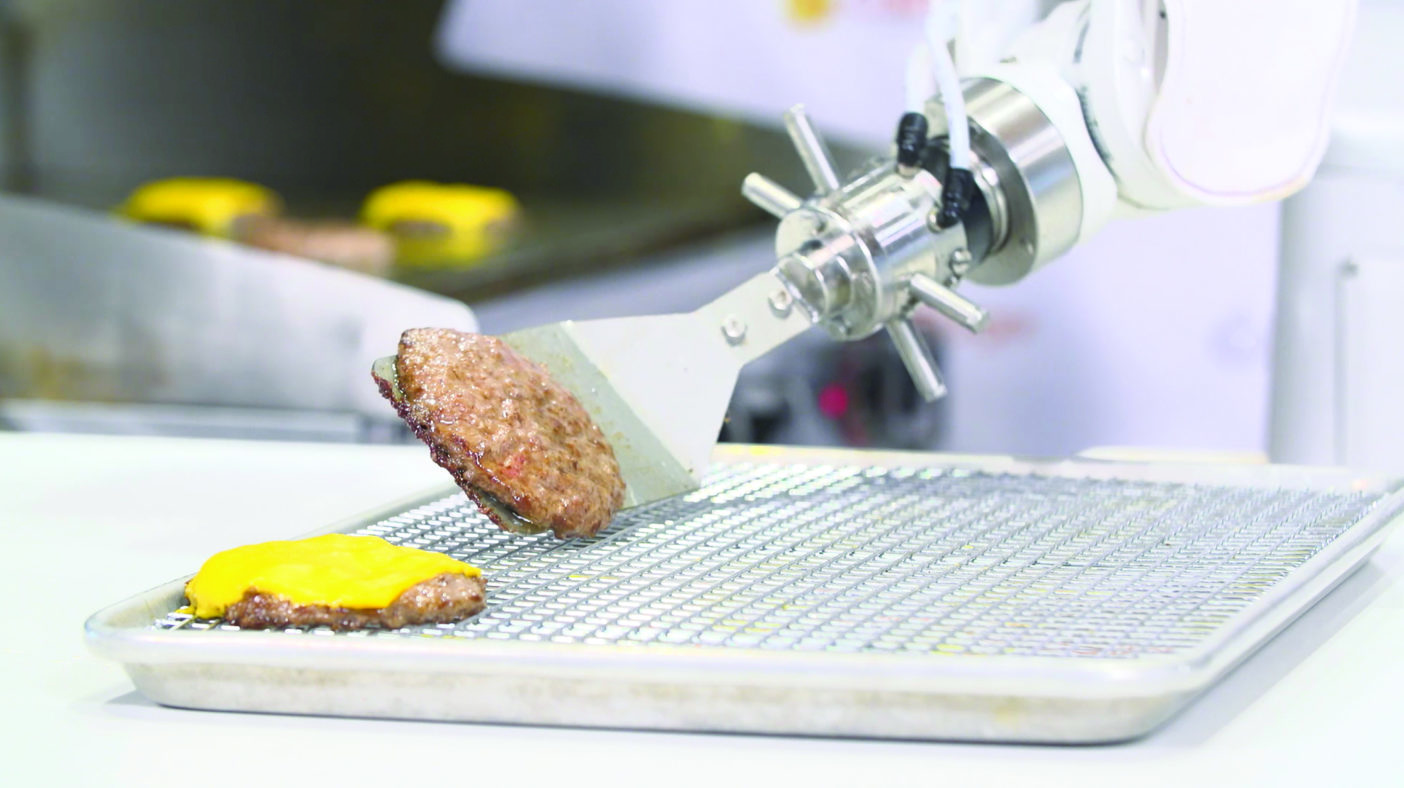
Now, some say, robots may shift from being a novelty to a necessity. The US Center for Disease Control says the risk of getting Covid-19 from handling or consuming food outside the home is low. Still, there have been numerous outbreaks among restaurant employees and patrons. “I expect in the next two years you will see pretty significant robotic adoption in the food space because of Covid,” says Vipin Jain, co-founder and CEO of Blendid, a Silicon Valley startup.
Blendid sells a robot kiosk that makes a variety of fresh smoothies. Customers can order from a smartphone app and tweak the recipe if they want more kale or less ginger, for example. Once or twice a day, a Blendid employee refills the ingredients.
Only a handful are now operating around San Francisco, but since the pandemic began, Blendid has started contract discussions with hospitals, corporations, shopping malls and groceries. “What used to be forward-thinking – last year, pre-Covid – has become current thinking,” Jain says.
As salad bars shut down, Hay ward, California-based Chowbotics started getting more enquiries about Sally, a robot about the size of a refrigerator that makes a variety of salads and bowls. Sally lets customers choose from 22 prepared ingredients stored inside the machine. It can make around 65 bowls a day before kitchen workers need to refill the ingredients.
Prior to this year, Chowbotics had sold around 125 of its US$35,000 (£27,000) robots, primarily to hospitals and colleges. But since the coronavirus hit, sales have jumped more than 60%, CEO Rick Wilmer says, with growing interest from grocery stores, senior living communities and even the US Department of Defense.
Wilkinson Baking Company, whose BreadBot mixes, forms and bakes loaves of bread, has also been getting more enquiries. Randall Wilkinson, CEO of the Walla Walla, Washington-based company, says the BreadBot serves shifting needs. Grocery shoppers no longer want self-serve options like olive bars, but they still want fresh and local food. Seeing how that food is made also gives them more confidence, he says.
Learning curveRobot cooks haven’t always been successful. Spyce, a Boston-based restaurant with a robot-run kitchen, closed in November to retool its menu. Zume, a Silicon Valley start-up that made pizzas with robots, shut down its pizza business in January 2020. It’s now making face masks and biodegradable takeout containers.
Max Elder, research director of the Food Futures Lab at the Palo Alto, California-based Institute for the Future, is sceptical about the future of food-prep robots once the pandemic has eased. “Food is so personal, and it needs to involve humans,” he says.
Elder is also concerned that focusing on automating food preparation during the pandemic will shift attention from other problems in the food system, such as outbreaks among meat industry workers or produce pickers. “We can’t automate our way out of the pandemic because the pandemic affects much more than what can be automated,” Elder says.
Automated food companies insist they’re not trying to replace human workers. At White Castle, Richardson says Flippy will allow managers to redeploy workers to drive-thru lanes or help them cover a shift if an employee calls in sick. Wilmer, of Chowbotics, says Sally may actually create jobs, since it keeps selling food at times of day when it wouldn’t have been available before.
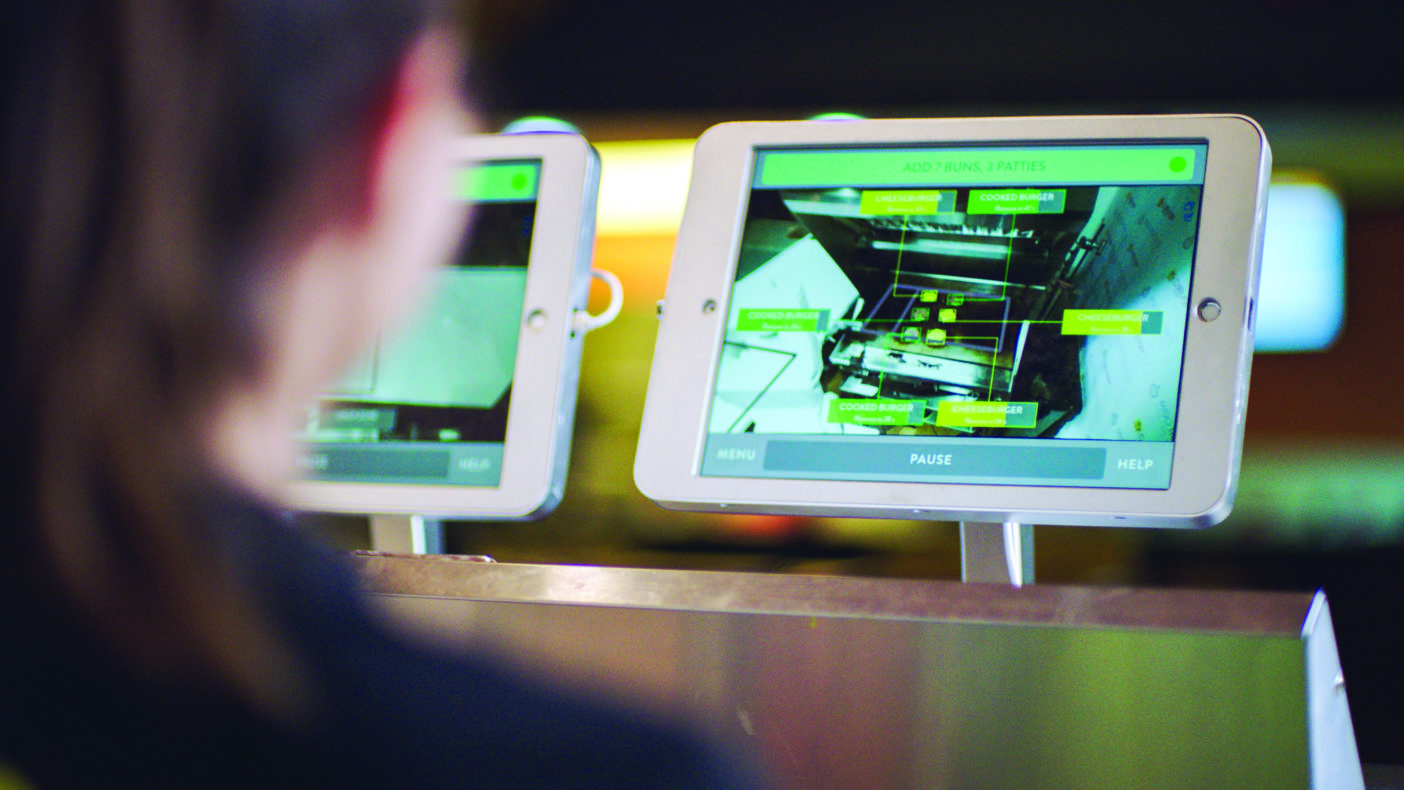
But robots can lower the demand for labour. At the University of Arkansas for Medical Sciences in Little Rock, Arkansas, workers used to spend six hours per day prepping grab-and-go salads in the 24-hour cafe, says Tonya Johnson, the school’s director of nutrition services. But two years ago, the campus installed a Sally, which now makes an average of 40 salads per day. Sally allowed the school to eliminate a vacancy in its cooking staff, Johnson said.
Johnson says the campus bought another Sally for students to use when they returned last August, which has since saved around four hours per day of grab-and-go salad prep in the college deli. “I think the pandemic has made us realise how much we need more equipment like Sally,” he says.
Miso Robotics co-founder and CEO Buck Jordan says fast food restaurants are already having trouble finding workers, due in part to a shrinking population of young workers. “It’s our contention that automation is not a choice,” he says. “You must automate in order to survive the future.”
Eyes on the UK
Miso Robotics has announced its first funding round in the UK. The company has previously raised over US$17m (£13.5m) in funding rounds in the USA, following a valuation of over US$80m (£64m) in 2019.The equity crowd funding round is being hosted in collaboration with Crowdcube with the aim of raising over US$30m (£24m) in new funding worldwide, supporting Miso’s expansion into Europe.
“We are excited to open our first round of funding in the UK, a market where we see huge potential for the growth of the fast-food sector and its use of smart technology to improve the experience for both customers and staff,” says Buck Jordan, CEO of Miso Robotics.
“Technology is going to play a vital role in helping restaurants build back better, from improving health and safety to allowing workers to focus on less mundane roles. Crowd funding means that everyone has the opportunity to invest and be part of this emerging and exciting sector.”
Founded in 2016, Miso Robotics’ has drawn attention across the USA and internationally for its kitchen assistant Flippy that cooks burgers, fries, and chicken.
The autonomous robotic kitchen assistant arm, which learns from its surroundings and acquires new skills, has been deployed across the US market at CaliBurger restaurants and venues like Dodger Stadium in Los Angeles through Levy Restaurants, part of the UK-based Compass Group.
The burger-flipping robot is designed to provide a safer and healthier work environment for staff and food production by reducing human to food contact, but also completes mundane tasks quickly, while increasing profit margins.
Customers in the USA deploying Flippy have projected an increase in profit margins of approximately 300%.Miso Robotics has also recently announced a partnership with PathSpot and PopID to further advance sterile and safe cooking environments.
PathSpot is a hand-scanning device that can check an employee’s hands in two seconds to determine whether pathogens are present, will be integrated into Flippy.
PopID, a face payment platform, attaches to doors to scan and measure the body temperatures of staff, delivery drivers, and guests, and can detect if the person has a fever.
This article originally appeared in the January 2021 issue of Robotics & Innovation Magazine

